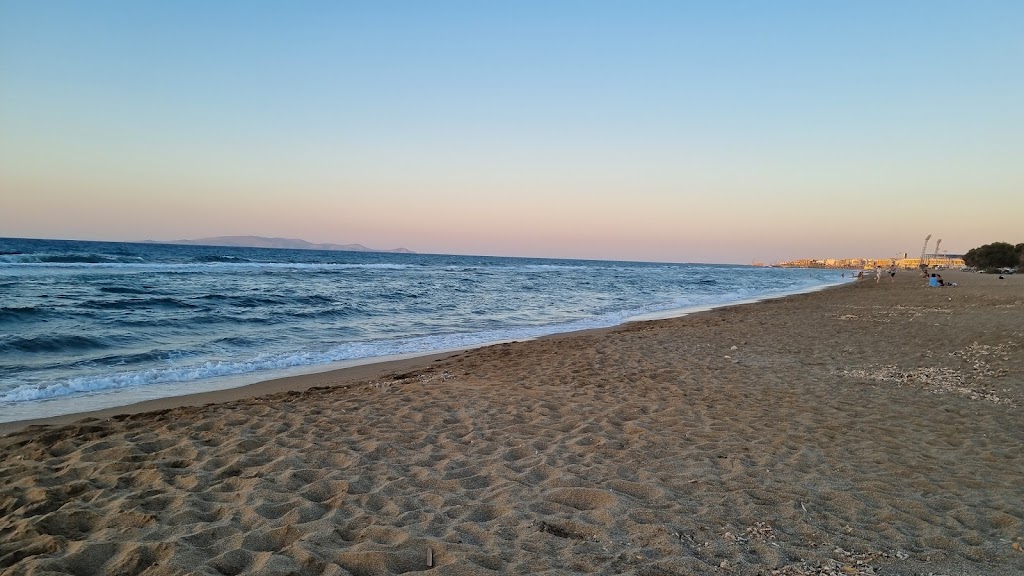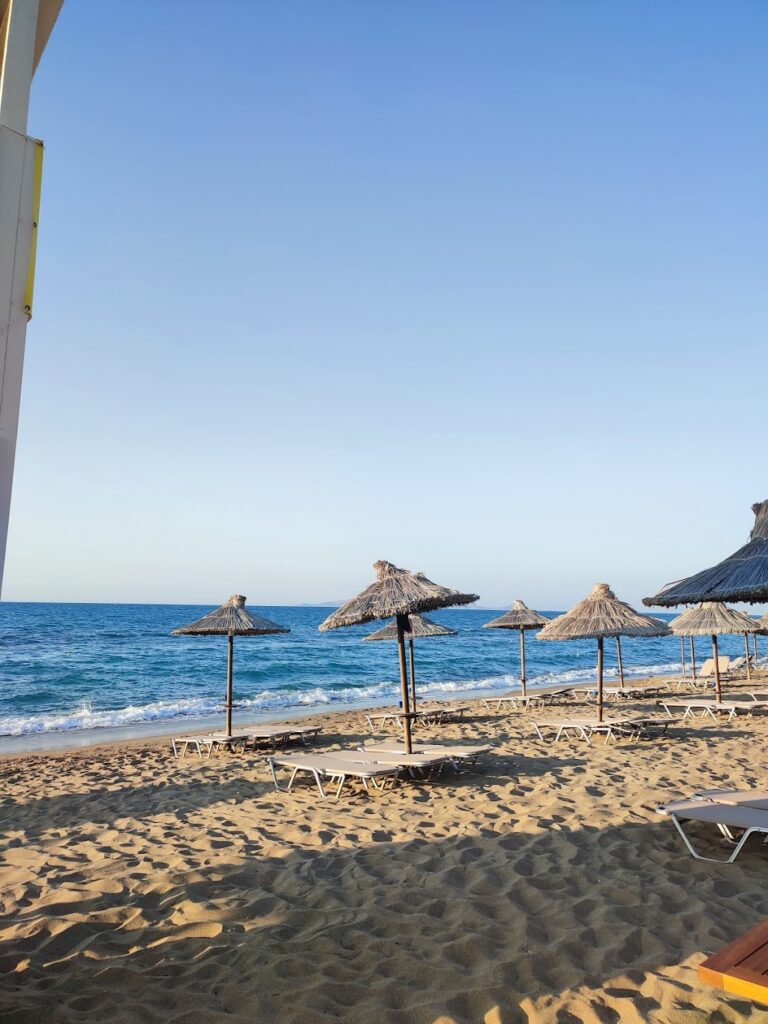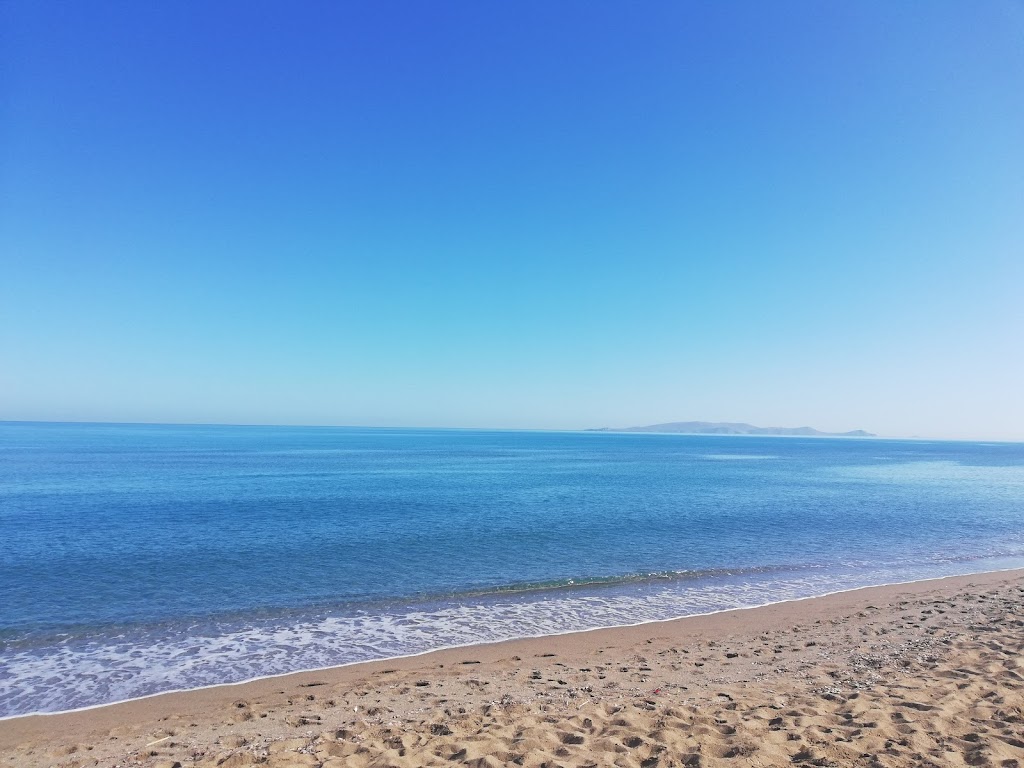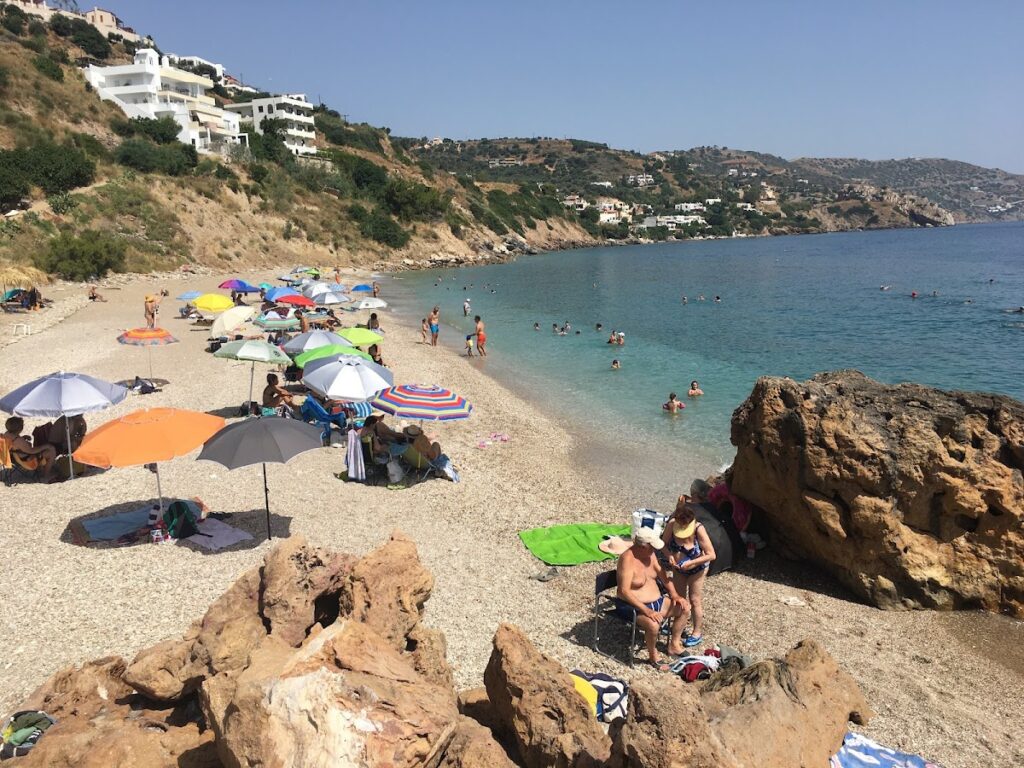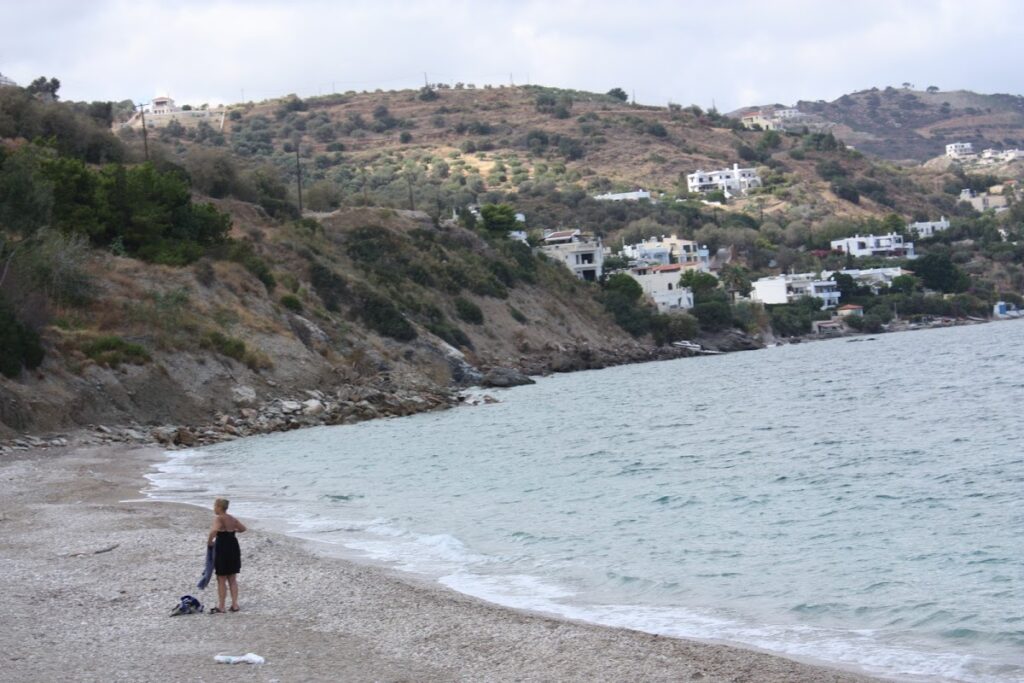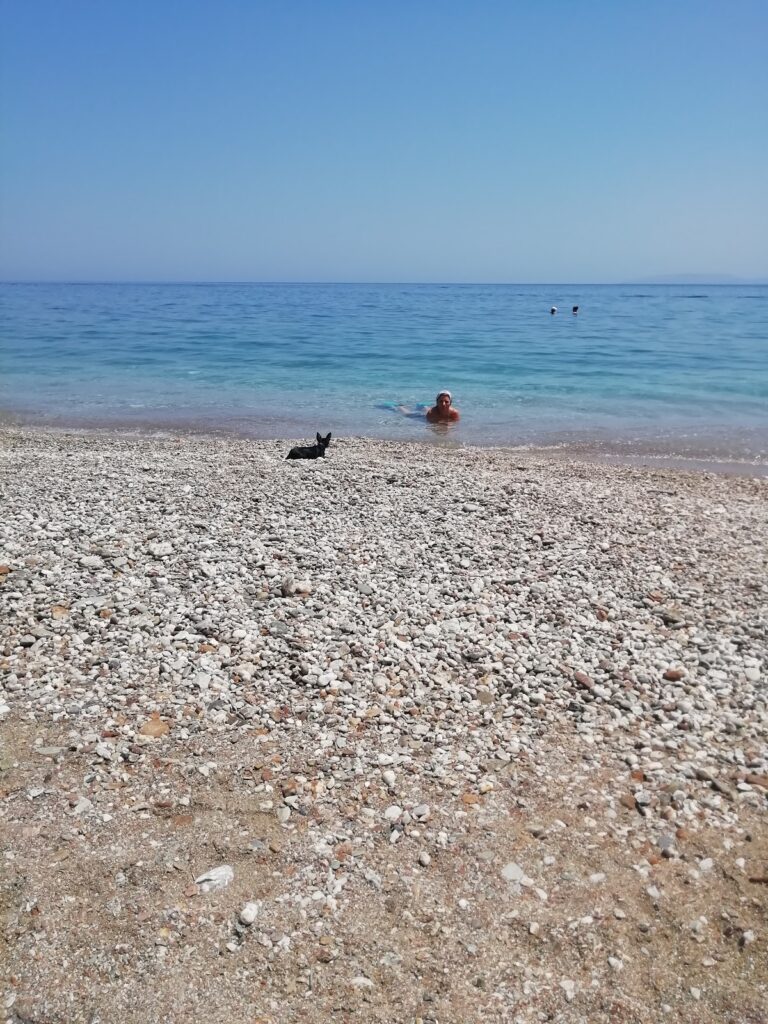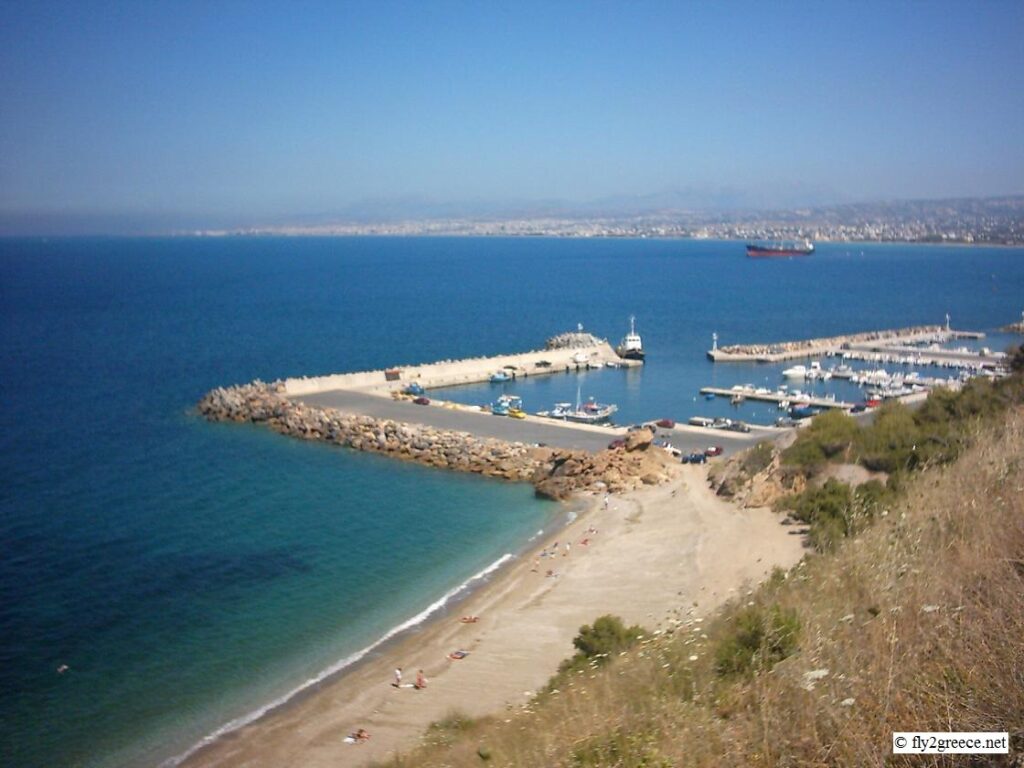Beaches near Káto Asítai, in Heraklion region
Here is list of closest beaches to Káto Asítai
- 16.2 km
- Ellinoperamata beach
- Sand
- Shallow
- Blue
Situated 8km west of Heraklion city, Linoperamata, also known as Ellinoperamata, is a scenic sandy beach stretching up to 7km long, beginning from Linoperamata and culminating at the Pancretan Stadium, 1km west of Heraklion. The beach is uniquely bordered by the Almiros river in the west.
The locals do not frequent Linoperamata as much due to the presence of a local Power Station and heavy industries in its western region. Nevertheless, the beach boasts of clean water and a serene atmosphere. Unlike the highly organized beaches in the neighboring Ammoudara, Linoperamata has a more natural appeal, although there are a few hotels in the vicinity.
Open to the northern winds, the beach is often wavy, making it a favorite among windsurfers. Getting to Linoperamata from Heraklion is convenient via the city’s bus service.
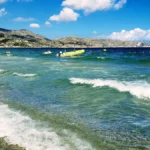
- 17.0 km
- Ammoudara beach - Heraklion
- Sand
- Shallow
- Blue
Ammoudara, a beach extending 7km west from River Giofyros, located 1km west of Heraklion’s centre, draws in thousands of tourists annually, predominantly due to its expansive sandy coastline. Now a suburb of Heraklion, the beach is known for its unique brownish sand, with a rocky strip about 50m inland signifying the ancient shoreline.
Whether you prefer bustling environments or more private settings, Ammoudara caters to all. The coastline offers organized beaches equipped with sunbeds, umbrellas, beach bars, lifeguards, showers, changing rooms, and a plethora of water sports. Known for its year-round strong winds, Ammoudara is a popular spot for windsurfers. For a quieter experience, the beach’s western area, starting from the Pancretan Stadium and extending east towards the Xeropotamos wetland and dunes, is ideal. River Almiros and River Gazanos’ mouth areas, along with the Ellinoperamata industrial area, also offer peaceful beach spots.
The surrounding locale is also remarkable. The Almyros river spring, Crete’s largest water source, forms the area’s most extensive habitat. Nearby lies the Almiros gorge, an easy location for a leisurely walk. Alternatively, you can opt for a hike up the Stroumboulas mountain, Heraklion’s volcanic-like mountain.
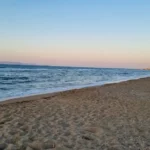
- 17.5 km
- Pantanassa beach
- Pebbles, Sand
- Deep
- Blue
Pantanassa, situated 12km west of Heraklion, is named after the Monastery of Panagia Pantanassa, which is dedicated to the Virgin Mary. The beach lies adjacent to the quaint port of Pantanassa. Prior to the establishment of the port, Pantanassa boasted an enchanting beach, concealed by a small pine forest and possessing crystal-clear waters. Now, the beach has been divided by the port, causing Pantanasa beach to lose some of its former allure. Nonetheless, it still retains its beauty, featuring pebbles and clear waters.
The beach offers amenities such as umbrellas and sunbeds, and some pine trees still grace the nearby cliffs. A pathway from the port allows for easy access. If hunger strikes, there are eateries in the port of Pantanassa and nearby areas. Visitors can combine their beach visit with a trip to the Pantanassa Monastery, perched atop the pine-covered hill above the beach. Built in the mid-20th century, it was envisioned to serve as a charity monastery, but the founder, Nikolaos Xenos, passed away before realizing his dream. Today, the monastery functions as a nunnery.
The Lefkadia area lies to the west of Pantanassa beach. Here, two secluded bays, largely unknown to most Heraklion residents, provide an ideal spot for relaxation. Recently, a beach bar was established and a trail leading to the beach was opened. Helidoni beach, featuring sandy and pebbly areas with a predominantly rocky seabed, is perfect for snorkeling. The western view is captivating, with the ruins of the old Paliokastro castle visible. Visitors can park in the nearby small pine grove and hike up to the castle.

- 18.2 km
- Helidoni Beach
- Pebbles, Rocks in places, Sand
- Deep
- Blue
Contrary to the prevailing belief that Crete’s scenic beaches are situated in remote areas far from major cities, those familiar with the island know that hidden gems are scattered across every corner. One such paradise is the Helidoni (Swallow) beach, just a stone’s throw from the historical Paliokastro fort in Rogdia near Heraklion. This haven is just a five-minute drive from the outskirts of Heraklion.
The beach known as Helidoni or Porto Helidoni is situated just south of Paliokastro and is nestled beneath the highway. A staircase with wooden steps descends to the sea level. The beach stands out for its cleanliness and the crystal-clear water that brings to mind the best beaches of southern Crete. The beach is oriented towards the east and, as a result, is typically calm, much like other beaches stretching from Ellinoperamata to Frankia. It is a quaint beach with a blend of fine pebbles and sand in certain spots. The seabed is quite rocky, making it perfect for snorkelling. There’s also a small canteen on the beach. Its name, Helidoni, is derived from the swarms of swallows that flock to this area annually.
Just a few meters east of the main Helidoni beach, another small sandy beach can be found, surrounded by picturesque rocks. This beach can only be reached by traversing the rocky coastline from Helidoni, lending it a tranquil atmosphere. There are stairs leading to the beach, but they pass through private properties, making them inaccessible to visitors.
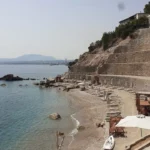
- 18.6 km
- Paliokastro beach
- Pebbles
- Deep
- Deep blue
Situated 14km to the west of Heraklion, Paliokastro, also known as Paleokastro, can be found on the western coastline of the Bay of Heraklion. This charming pebble beach is nestled into a green valley’s exit, which is intersected by streams flowing down from the Rogdia village. The cove of Paliokastro is securely flanked by tall cliffs and faces the east. A massive limestone rock towers over the eastern part of the beach, the summit of which was once the site of the Venetian fortress of Paliokastro. This fortress served as a defensive structure against enemy invasions to the Bay of Heraklion. The castle remnants suggest that it was constructed on the acropolis of the ancient town of Kytaeon.
Paliokastro is a beloved destination for the locals of Heraklion, who visit daily with their families. It has even led many to purchase homes in the area. Although not highly developed, the beach offers an idyllic setting for relaxation. Traditional food can be savored at various taverns, and several small hotels and rooms are available for stay. A mini market is also present on the beach, opposite an old limekiln, which is one of Crete’s best-preserved structures of its kind.
The beach’s western part boasts large pebbles and deep waters, making it a perfect spot for fishing and snorkeling. Natural stair formations on the rocks beneath the old fort provide a thrilling diving experience, with heights ranging from 1 to 20 meters. This spot is often frequented by children competing in diving contests. A tall, narrow, and dark cave is nestled between the beach and the rocks. Local folklore suggests this cave might have been a tunnel leading from the fortress to the sea, serving as an emergency escape route, although this remains unconfirmed. Paliokastro is easily reachable through the Heraklion-Chania highway, with a dedicated exit leading to the beach.

No results available
ResetBeaches in other nearby areas
No results available
Reset




